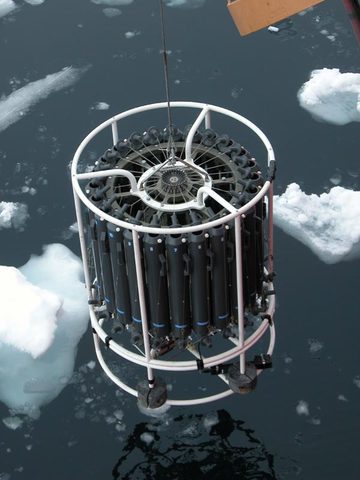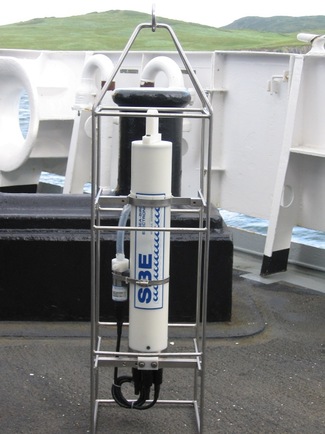 Healy's CTD and rosette Healy's CTD and rosette The most prominent feature on the measurement platform is usually not the CTD itself but an array of Niskin bottles, called a rosette. These bottles are open to the water and flood as they descend to the ocean floor, but they seal themselves when remotely triggered to at specified depths. When they return to the surface, the water locked inside is sampled for all sorts of things; nutrients, phytoplankton content, trace minerals, and so on, by the scientist on board. Also attached to the CTD are sensors which gauge transmissivity, dissolved oxygen, and fluorescence. My job on the Healy is to be the faithful recorder of the CTD’s journey to the bottom, directing it to the ocean floor, and bringing it back up (with the help of the Coasties and others doing the hard stuff like manning the winch) while tripping bottles to sample water at depth. At the surface, I sample water from the Niskin bottles, process the data obtained during the cast, and reset the measurement platform for the next cast. On a good day, we can do a CTD cast once every 45 minutes, but in ice (like we are in now), it can take over 2 hours. None of this matters, of course, if the boat isn't stopping to take measurements. As befits a Coast Guard vessel, we're somewhere en route to Barrow, AK, 200 miles through the ice, to rescue a Turkish man who thought it would be a good idea to attempt the Northwest passage in an aluminum sailboat in June. No work for me! Comments are closed.
|
AuthorOceanographer, Mathemagician, and Interested Party Archives
March 2017
Categories
All
|

 RSS Feed
RSS Feed
